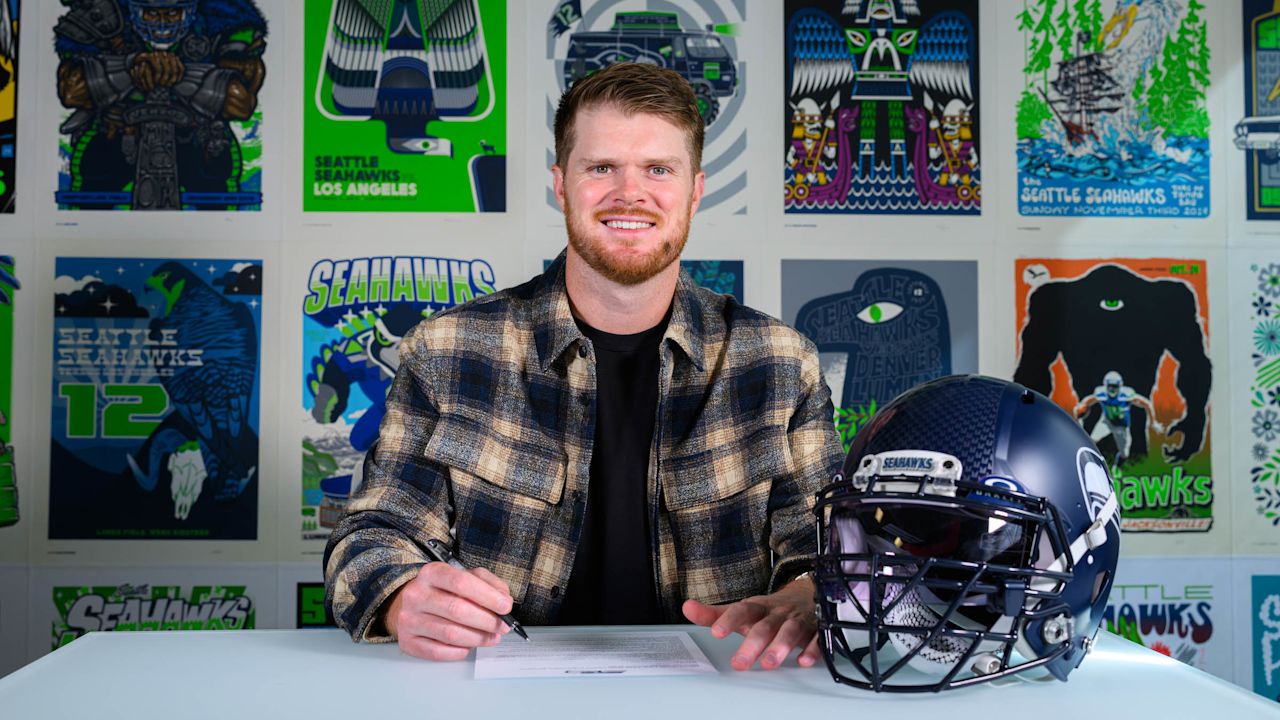
The Seattle Seahawks entered the 2025 offseason with a clear objective: maintain competitive balance while preserving long-term salary cap flexibility. Their approach to free agency reflected a disciplined strategy that prioritized short-term value with low-risk, high-reward contracts. Among their notable acquisitions was veteran tight end Eric Saubert, whose deal exemplifies how the Seahawks’ front office continues to excel at maintaining fiscal flexibility without compromising talent.
A Closer Look at Eric Saubert’s Signing

Seattle signed Saubert to a one-year, incentive-laden contract worth up to $3.5 million. The structure of his deal includes a modest base salary with performance bonuses tied to receptions, snap counts, and touchdowns. By doing so, the Seahawks ensured that they could benefit if Saubert outperforms expectations while limiting their financial commitment if he doesn’t.
Saubert, a journeyman tight end with stints in Denver, Chicago, and Atlanta, is known for his blocking prowess and reliability in short-yardage situations. His signing provides Seattle with a versatile veteran presence who can contribute immediately while adding depth to a tight end room that saw turnover after the departure of Noah Fant.
Structuring Flexibility: Seahawks’ Playbook for Success
The Saubert contract follows a familiar formula that has become a hallmark of Seattle’s front office. General Manager John Schneider and head coach Mike Macdonald have emphasized structuring deals in ways that mitigate long-term risk while providing upside. This approach was not only evident with Saubert but also mirrored in their other major signings this offseason.
1. Sam Darnold – Quarterback Insurance Without Long-Term Risk
The Seahawks inked quarterback Sam Darnold to a three-year, $100.5 million deal, but the lack of guaranteed money beyond the first year makes it a win for Seattle. The deal is structured so that both sides will likely revisit negotiations after the second year, giving the Seahawks an exit strategy if Darnold fails to meet expectations. This level of flexibility prevents Seattle from being locked into a burdensome long-term commitment.
2. Cooper Kupp – Star Power with Conditional Control
Seattle’s acquisition of All-Pro receiver Cooper Kupp was another savvy move that balances cap control with impact talent. Kupp’s deal included a restructured contract that limits Seattle’s long-term liability, giving them control over his future if injuries or performance become concerns. Kupp’s proven track record as a game-changer adds immediate offensive firepower, but the team retains the flexibility to make adjustments down the road.
3. DeMarcus Lawrence – Veteran Presence with Minimal Risk
The signing of defensive end DeMarcus Lawrence came with a cap-friendly structure that ties most of his compensation to performance incentives. Lawrence brings veteran leadership and pass-rushing experience to the Seahawks’ defensive line, but Seattle ensured that if his production declines, the financial implications remain minimal.
Why Flexibility Matters in Today’s NFL
The Seahawks’ emphasis on cap flexibility isn’t just about avoiding bad contracts — it’s about maintaining the ability to pivot quickly in response to the ever-changing NFL landscape. Injuries, unexpected performances, and the evolving salary cap all require teams to stay nimble. By prioritizing deals that limit guarantees and emphasize incentives, the Seahawks retain the ability to add pieces midseason or pursue high-profile free agents when needed.
Eric Saubert’s Role in the Bigger Picture
While Saubert’s signing might not have grabbed national headlines, his contract is emblematic of the Seahawks’ larger vision. He provides depth and versatility at a position where Seattle needed reliability, all while leaving the team with the financial breathing room to make additional moves if necessary.
Final Word: Seahawks Staying Ahead of the Curve
As the 2025 season approaches, it’s clear that the Seahawks have not only improved their roster but done so while safeguarding their financial future. The signings of Saubert, Darnold, Kupp, and Lawrence reflect a calculated approach that balances talent acquisition with cap management. Let it be known — Seattle is playing the long game, and they’re doing it with precision.
Leave a Reply